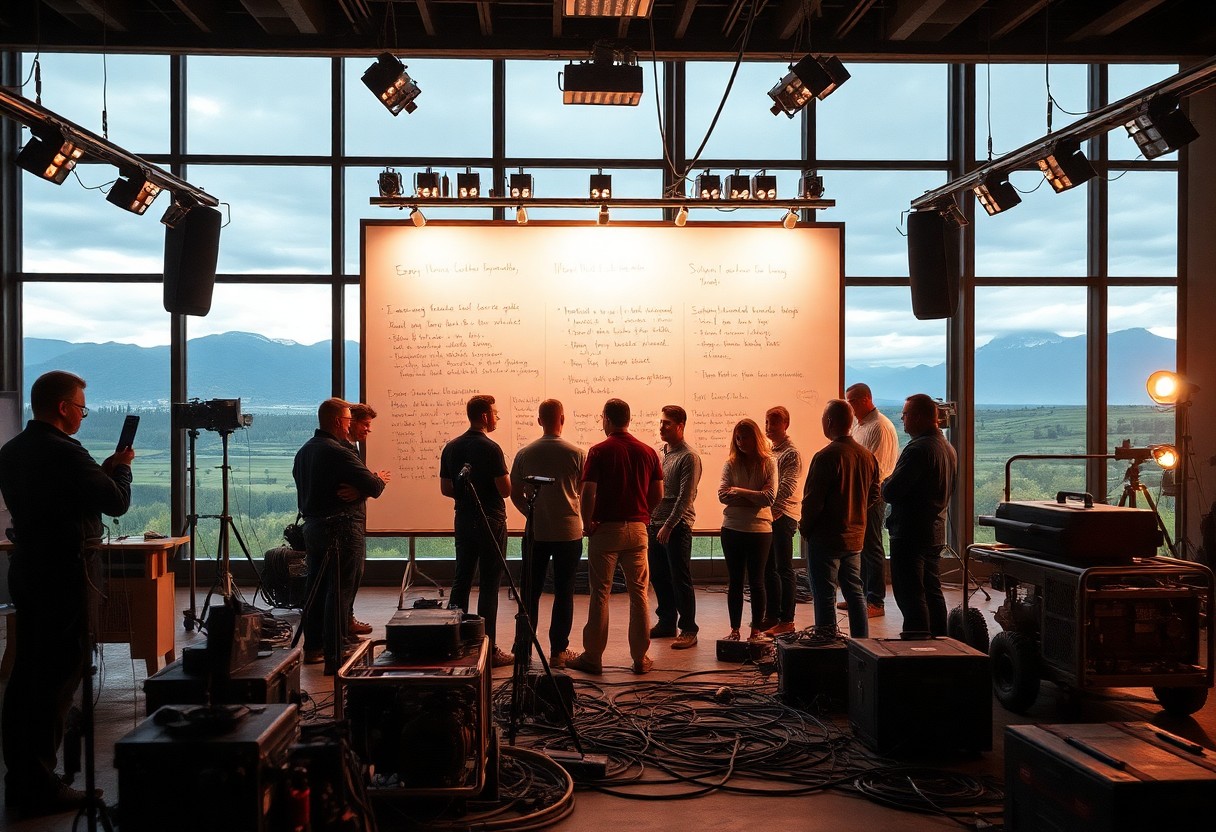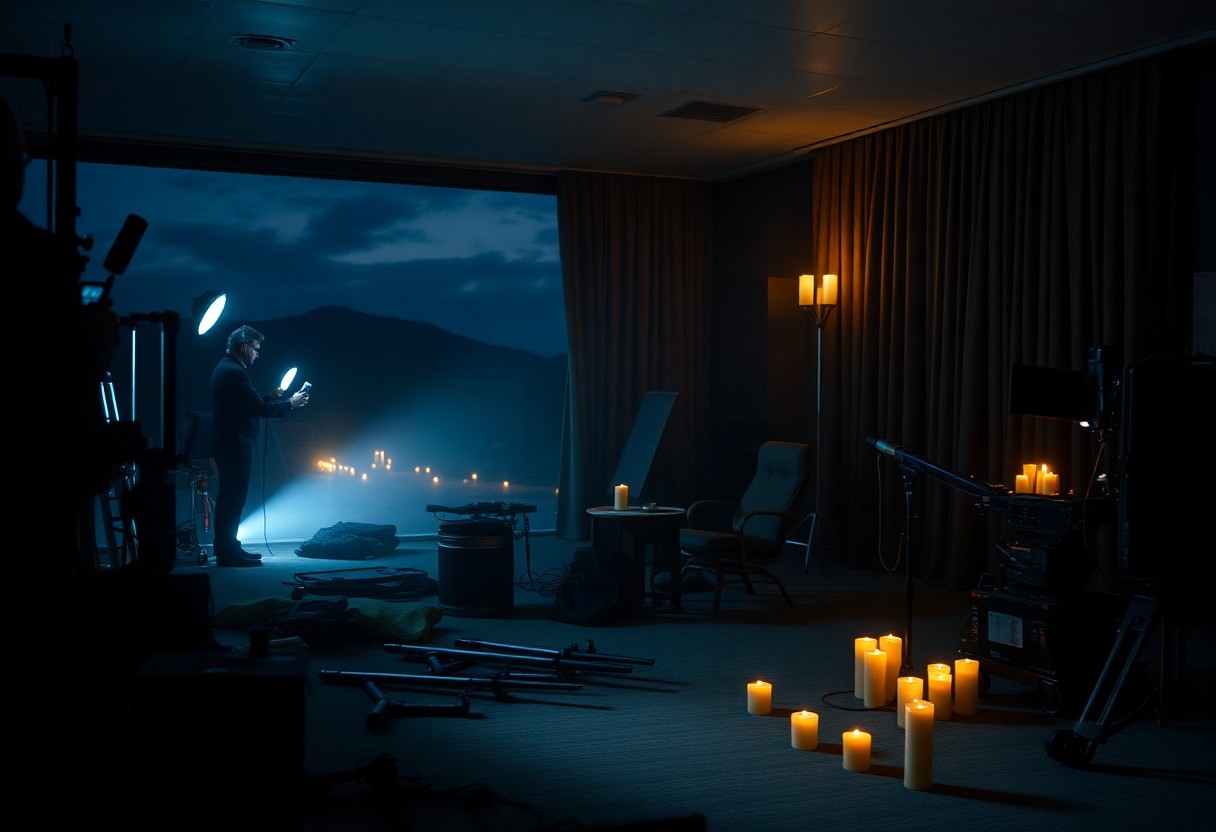Over the years, power outages in New Zealand films have created unexpected challenges and unique stories that shaped many beloved productions. You might be surprised to learn how these incidents influenced key scenes, altered shooting schedules, and even sparked creative solutions among cast and crew. This post investigates into firsthand accounts and behind-the-scenes insights, revealing how filmmakers navigated these unexpected hurdles and transformed them into memorable cinematic moments.
Key Takeaways:
- Power outages in film productions can lead to unexpected delays and complications.
- Some filmmakers incorporate real power outages into their narrative for authenticity.
- Technical challenges during outages often require creative problem-solving from the crew.
- Documenting outages can provide insight into the resilience of film teams.
- Historical accounts of power failures have influenced plot development in various films.
The Impact of Power Outages on Filmmaking
Power outages can dramatically disrupt the filmmaking process, affecting everything from lighting to editing and sound recording. Your crew relies heavily on electricity, and any interruptions result in costly delays. Filmmakers must often devise contingency plans to accommodate these unforeseen events, which can include alternative power sources or adjusted shooting schedules to maximize daylight hours.
Case Studies of Notable Films
Several films have encountered significant challenges due to power outages, showcasing how these incidents can interrupt creative processes.
- Film A: Lost 30% of scheduled shooting days due to rolling blackouts.
- Film B: Filmmakers utilized generators for 50% of post-production after a week-long power outage.
- Film C: Experienced a 25% increase in budget for additional lighting equipment to mitigate outages.
- Film D: Had to reschedule filming, causing a 15% extension in the production timeline.
Filmmaker Experiences and Challenges
Filmmakers often recount their frustrations during power outages, particularly when tight deadlines are at stake. You might hear stories of crews standing idle, unable to shoot scenes or edit footage, which can lead to increased costs and logistical nightmares. Some directors have had to think creatively, repurposing scripts to maximize natural light or relying on portable power solutions. Each challenge faced brings valuable lessons about adaptability in an industry that heavily depends on seamless technology and coordination.
Behind the Scenes: Managing Light and Energy
Filmmakers face unique challenges when managing light and energy during power outages, often relying on innovative strategies to maintain production schedules. You will see crew members rapidly deploy portable generators, battery packs, and solar lighting systems to keep the set illuminated. Additionally, filmmakers may utilize natural light creatively by scheduling shoots to coincide with ideal lighting conditions, ensuring that scenes remain visually coherent despite interruptions.
Techniques for Maintaining Continuity
To maintain continuity during outages, you might observe filmmakers employing techniques such as shotlists that prioritize imperative scenes and the use of color grading to harmonize inconsistencies. Often, specific markers are placed on set to help recreate lighting angles once power is restored, allowing for a seamless transition between shots taken before and after the outage.
Equipment and Innovations
Advancements in film equipment have significantly shaped how filmmakers deal with power disruptions. You’ll find that LED lighting technology, for instance, allows for bright yet energy-efficient illumination. Many sets are now equipped with battery-operated lighting rigs that can operate for hours without external power, ensuring that creativity continues undeterred.
Innovations like LED panels, which can provide high-intensity light while consuming minimal power, have revolutionized the approach to set lighting during outages. Alongside these, filmmakers increasingly turn to smart power solutions, such as hybrid generators that combine solar and traditional fuel sources, providing backup energy without the noise or emissions usually associated with generators. These technologies enhance set mobility and support dynamic shooting schedules, allowing you to capture critical moments even in challenging circumstances.
Audience Reception: Power Outages in Film
Your perception of power outages in films can greatly shape your viewing experience. For many audiences, these interruptions symbolize vulnerability or create a heightened sense of tension, pushing the narrative into unexpected territory. When filmmakers incorporate actual outages, the rawness it brings resonates with viewers, making them ponder their own experiences with failure or disruption.
Viewer Perspectives and Reactions
Cultural Significance in New Zealand Cinema
Cultural significance of power outages in New Zealand cinema reveals deeper societal themes. You observe these events as metaphors for isolation, vulnerability, or even a critique of modern dependence on technology. In films like “The Piano,” the stark contrasts of light and darkness reflect not only physical power failures but also emotional and cultural disconnections intrinsic to the New Zealand psyche.
This thematic exploration echoes across various NZ films, where power outages serve as a narrative device to amplify emotional stakes. For instance, in “Hunt for the Wilderpeople,” scenes of disconnection parallel the protagonists’ struggles with belonging and survival. By weaving outage elements into storytelling, films become a canvas to explore collective experiences, illustrating how New Zealanders grapple with identity and resilience amid challenges.
Safety Protocols During Power Outages
Establishing safety protocols is vital during power outages on film sets. You should have a comprehensive plan in place, detailing power restoration strategies, evacuation routes, and communication methods. Regular drills can help your crew become familiar with these protocols, ensuring a swift response and minimizing risks when disruptions occur.
Emergency Procedures for Film Sets
Your crew needs clear emergency procedures to follow when a power outage strikes. This includes maintaining a communication chain to inform everyone on set about the situation. Designate emergency coordinators who can take charge and guide the team to safety, ensuring all personnel knows their roles during these unexpected events.
Training Crew for Unexpected Situations
Training your crew for unexpected situations is vital in preparing for power outages. Conduct regular workshops that focus on emergency response, safety equipment usage, and first aid. Familiarizing your team with these practices fosters confidence and ensures they can effectively react to any unforeseen circumstances on set.
Incorporating real-life scenarios into your training sessions can significantly enhance your crew’s preparedness. For instance, simulate power outage drills that require immediate action, such as switching to backup power sources or lighting. This hands-on approach not only reinforces safety protocols but also strengthens teamwork, fostering an environment where everyone can rely on each other during crises. Keeping your crew equipped with the right skills can make all the difference when navigating unexpected challenges in production settings.

The Future of Filmmaking in New Zealand
The landscape of filmmaking in New Zealand is evolving, driven by innovation and collaboration. As the industry looks to the future, projects like The True Story Behind Hawaiian History Epic ‘Chief of War’ highlight the potential for international storytelling that resonates with local audiences. Embracing new technology alongside community-driven initiatives, the focus remains on creating captivating narratives while addressing the unique challenges that come with power outages.
Technological Advances and Backup Solutions
Incorporating advanced technology is transforming how filmmakers handle power outages. Utilizing generators, battery packs, and renewable energy sources ensures minimal disruption during shoots. Innovations such as cloud storage and real-time data backups allow seamless content preservation, enabling your production to continue smoothly despite unexpected challenges. Additionally, on-set power monitoring systems can prevent outages before they occur, enhancing overall efficiency.
Community Support and Collaboration
Building a supportive network is imperative for filmmakers facing power outages. By fostering collaboration within your community, you gain access to shared resources, expertise, and local talent. When crews come together, they can optimize their strategies for handling outages through shared experiences and solutions. This sense of unity not only bolsters production resilience but also strengthens the local film industry as a whole.
Collaboration often extends beyond the film set, involving local businesses that provide equipment and logistical support during emergencies. Community initiatives, such as shared training sessions on power outage protocols, enable you and your fellow filmmakers to navigate the complexities of production more effectively. Engaging with local audiences through screenings and events reinforces a sense of belonging, ensuring that the stories you create resonate deeply with the community and thrive despite power-related hurdles.

Lessons Learned from Power Outages
Power outages in film production often unveil critical lessons that enhance future projects. By analyzing past incidents, you can better understand the importance of contingency planning and equipment resilience. Reviewing how crews responded when faced with unexpected challenges can guide your own preparations, ensuring smoother operations and reduced downtime during emergencies.
Insights for Future Productions
Utilizing data from previous outages can inform your future productions, allowing you to anticipate potential issues and implement effective strategies. For example, investing in backup power sources or portable generators can significantly minimize disruptions. Furthermore, creating a solid communication protocol ensures everyone on set remains informed and safe during such events.
Adapting to Challenges in Film Industry
Facing power outages necessitates adaptability within the film industry, influencing everything from scheduling to creative processes. Utilizing flexible shooting plans allows you to adjust scenes based on available power and lighting. Collaboration with your crew to brainstorm alternative solutions fosters resilience and innovation, ultimately enhancing your ability to deliver on projects despite unforeseen setbacks.
In adapting to challenges like power outages, you should focus on creating a culture of problem-solving among your team. Encourage open discussions where everyone can contribute ideas to mitigate potential disruptions. For instance, having a designated backup team responsible for lighting and equipment setup can ensure critical tasks are handled efficiently, keeping momentum even when the unexpected occurs. The willingness to pivot and facilitate swift decisions during outages can substantially improve project outcomes, making your production more adept at overcoming hurdles.
Final Words
The stories behind power outages in New Zealand films reveal the challenges and creativity that filmmakers face. You gain insight into how these disruptions have shaped production experiences, influencing storytelling and atmospheric effects. By understanding these real-life scenarios, you appreciate the resilience and innovation that define the filmmaking process in New Zealand, making you more aware of the intricate connections between behind-the-scenes realities and the final cinematic product.
FAQ
Q: What are some common causes of power outages during film production in New Zealand?
A: Common causes include severe weather conditions, equipment failure, and accidents involving power lines or transformers.
Q: How do filmmakers manage power outages during critical filming scenes?
A: Filmmakers often have backup generators and contingency plans, ensuring that they can quickly resume filming once power is restored.
Q: Can power outages affect the storyline or visuals of a film?
A: Yes, unexpected power outages can lead to changes in shooting schedules, lighting setups, and even prompt reshoots to accommodate affected scenes.
Q: Are there any notable New Zealand films impacted by power outages during production?
A: Yes, several films have faced challenges due to power outages, notably ‘The Piano,’ which required adjustments to shooting techniques and scheduling.
Q: What lessons have filmmakers learned from past power outages in New Zealand?
A: Filmmakers have learned the importance of thorough planning, maintaining backup systems, and ensuring proper communication among crew members during outages.
